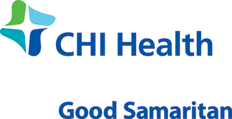Word of Mouth: Harness the Voice of Patients and Staff for Powerful Results
// By Ryan Hanser //

Here’s important context for health care marketing in 2017: Attention and trust continue to decline across the country. Year over year, America appears to be witnessing the collapse of expertise and institutional trust.
Sure, we still have knowledgeable specialists—doctors, for starters. The trouble is that people increasingly reject the authority of expertise. Moreover, a majority of us do not have faith in institutions—government, business, nongovernmental organizations, and media—to do what is right.
Instead, research says we live in a self-referential world where Google, Facebook, and other online destinations are relied upon to soothe skepticism and affirm bias. Beyond our continued trust in friends and family, we increasingly seek out the people who resemble ourselves. We trust peer recommendations online.
The initial reactions to these trends—a push for transparency in all sorts of institutions and advocacy for “the marketplace of ideas” where the important news will find you—held fast to the idea that the public cared about facts. But data suggests that what people most care about is fulfilling their need to belong—to be accepted and connected.
Word-of-mouth influence has always been higher for considered purchases like health care—people do more research, opinion-seeking, and deliberation for unprecedented needs and greater expenses. Adding rising health care consumerism to the declining institutional trust means third-party endorsement becomes a marketing imperative.
Now more than ever, I’m compelled to share perspective on how to harness the power of the authentic, trusted voices around you.
Peer Power
People are already talking about your organization, so listen closely and make the most of it. Give employees, partners, and especially patients the permission and encouragement to talk about your company. Make sure your spokespeople closely resemble your customers.
Today, we think it’s important to treat influence as an inverted pyramid, spreading across the population and across an array of publishing platforms. Read Paul Adams’ work on influence and social networks; he finds “the people who connect groups are not special” and suggests marketers focus on these small, connected groups. Read Ed Keller’s research on the rising share of online word of mouth; search and social media are major drivers of purchase consideration, yet almost 80 percent of word of mouth remains offline.
While it is tempting to tout expertise and leadership, remember that you have a lot more customers than you do CEOs and doctors, and these customers have a large network to whom their opinion matters. Connecting peers and amplifying their voices delivers results in the short and long term.
Activating Word of Mouth
It’s important to share an understanding of what drives word of mouth.
Word of mouth is mainly a post-purchase behavior seeded by deviation from what’s expected. Short wait times and friendly staff help, but patient satisfaction is often not enough to be remarkable. Instead, consider how you can drive market conversation from intrinsic motivation—sharing information to help others, making advocates look well informed, associating with trusted brands and so on.
You have a lot more customers than you do CEOs and doctors, and these customers have a large network to whom their opinion matters. Connecting peers and amplifying their voices delivers results in the short and long term.”
Here’s a simple example: My son’s dental clinic is full of video game consoles. Whenever he visits, there are stories told to neighborhood kids about this unexpected feature—the newest games are worth a mention to his peers. It’s been an effective tactic to make the dental practice attractive; they are very busy.
What can you do to make waiting—or some other aspect of your experience—remarkable?
The answer can come, in part, from listening closely to staff and patients. Beyond the value of research and monitoring for management, be sure to have a process to recognize advocacy. You can see it in a grateful email, a Net Promoter Score, a Facebook post, and many other forms. What’s important is that you recruit these people for support in trusted storytelling.

One of my firm’s first big identification efforts supported Roche Group’s launch of Xenical in 1999. A central process was identifying clinical-trial doctors and patients who—beyond good outcomes—had the ability to tell their authentic story in their local market without heavy media training. At the time, it took a lot of phone calls to line them up, but the result was first-person experience available to media in most major US markets. Remarkable patient stories coupled with events focused on nutrition led Roche’s first PR-driven launch, and it was very effective at reducing the need to pay for reach and frequency on a nearly 30-second list of treatment effects.
Today, it is easier to spot potential advocates at scale, especially online. Note again that patient satisfaction is likely not the indicator, though “likelihood to recommend” is important. Email metrics, referral tracking, volunteerism, digital mentions—choose methods that work best for your organization.
Integration Strategies
Recommendations, amplification, and advocacy often take the form of familiar PR and marketing tactics.
Recommendations come in two primary forms: the direct referrals we make to our networks and the reviews we publish online.

Niche groups are often powerful referrers. We helped the Center for Disabilities and Development at University of Iowa Stead Family Children’s Hospital promote integrated, community-based employment for people with disabilities. When peers found ways to connect to employers, the effort crashed web servers and filled voicemail. This early success, in turn, created attention for the strengths of this workforce and credited the employers for improving Iowans’ health and independence—a statewide campaign built most directly by connecting a small group of people by phone and email.
Most would recognize the importance of ratings and reviews, but I’m still surprised at how many organizations don’t encourage these from their stakeholders. Keep it simple; send a link via email tied automatically to your processes—the evening of the office visit, 30 days after moving in, etc.
Amplification takes two forms: sharing what others say about you and getting others talking about your marketing messages. The former is efficient content development; consider how the stories you find among patients and staff can power these campaigns.
Sometimes, the answer is obvious. MedImmune had famous patients—the McCaughey septuplets—prepared to support their launch of respiratory drug Synagis. It was the kind of timing that earned the biotech company the ability to reach more than 600 million people worldwide and drove sales way beyond expectations.
The latter form of amplification has been shown to deliver a 15 percent boost in Keller Fay’s ongoing research on the relationship between paid media and word of mouth. You should be encouraging your employees, patients, and communities to spread your campaigns, and they will do so, especially if the content is a peer voice with a remarkable story. People will especially share stories of people they know.
Calvin Community in Des Moines illustrates the power of testimonials. The not-for-profit continuing care retirement community owns a market position for quality care, a reputation strengthened by the news coverage, community events, and advertising that put residents and families forward to describe “how a retirement community ought to be.” The 50-year-old campus doesn’t have the sparkle of newer facilities, but the ability to amplify the voice of its customers has kept census healthy and energized stakeholders at a fraction of the marketing spend of its direct competitors.
Advocacy is the most evolved relationship. There is much talk lately of influencer marketing, but we’ve seen very efficient reach relying on our client’s customers to be the brand’s trusted ambassadors. Again, network effects work among small, trusted groups as much as they do across media channels and the loose-tie relationships many of us have online.
Outside health care, my firm recently built local teams of college students who drove marketing reach and sales on almost 50 campuses. Peers gained attention and built community at a fraction of the cost of other campus marketing approaches.

Closer to my office, we helped CHI Health Good Samaritan lead a community conversation on the importance of proper hand washing. The integrated campaign was found outside the hospital, traveling through employers and schools to make central Nebraska one of the last areas in the United States to see influenza that year. It was not a coincidence. In fact, Public Relations Society of America awarded a Bronze Anvil recognizing the campaign among the best in North America in 2005.
Ultimately, the strength of these campaigns and programs is bringing people together to feel part of something bigger than themselves—again, to be accepted and connected.
Considerations
This approach is not without risks.
The organization must deliver on promises passed along by those whose remarkable experiences brought a new face to your door. Often there is culture and strategy work required to help an organization host a market conversation led by patient voices.
And, of course, privacy is vital to building trust. Beyond avoiding a HIPAA violation, there is an opportunity to help people tell stories in full consideration of their privacy. Giving people permission and encouragement to speak up helps them understand the power of their own audiences; you can manage risk and grow advocacy by supporting a community of voices.
Also, measuring value beyond general lift takes effort. We find reputation and marketing ROI improve when these programs are in place, but understand that peer influence often creates imprecise attribution.
You Can Do It
Please don’t let fear be the driver. Empowering staff and patients to share what they find remarkable about your organization is instructive. Amplifying shared experiences creates the authenticity required today.
Indeed, a public relations mentor long ago made my evergreen counsel clear and simple: First, do the right thing. Then, talk about it.
As we look to 2017 with scarcer attention and trust, I must reinforce the second point: Make sure you have the right people talking.
Ryan Hanser, APR, leads Hanser & Associates, a full-service PR firm based in Des Moines, Iowa.
